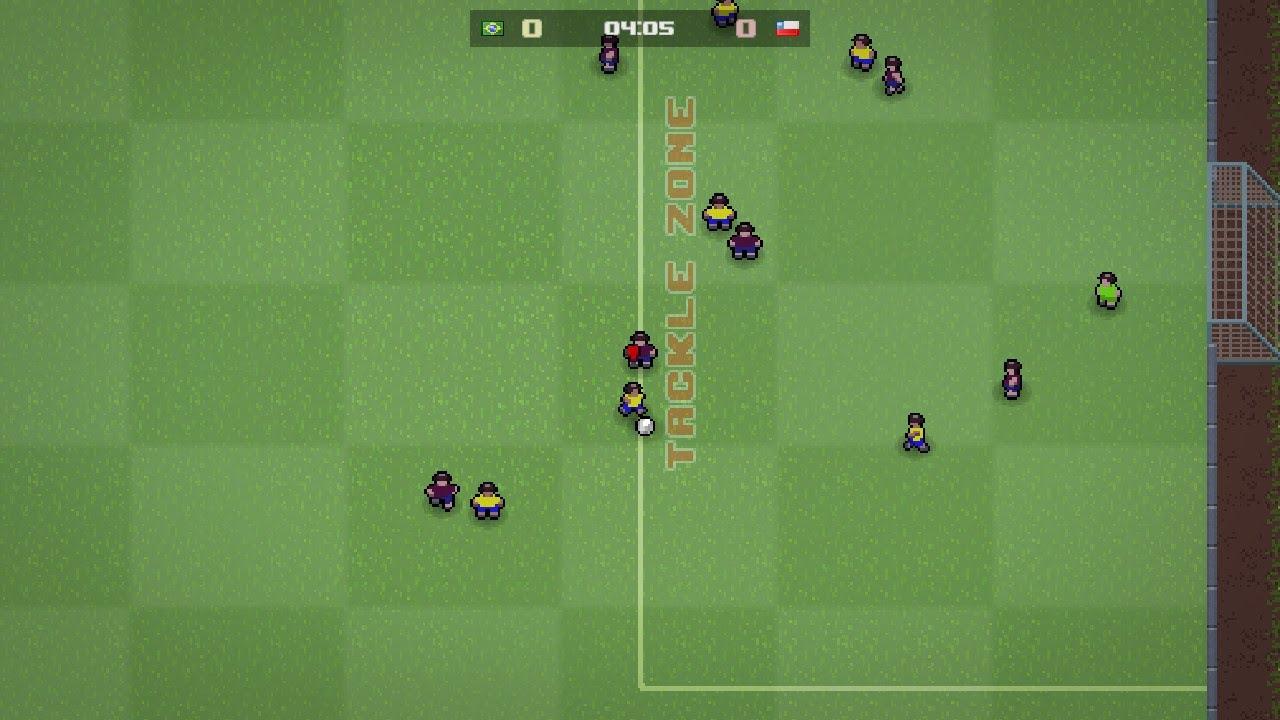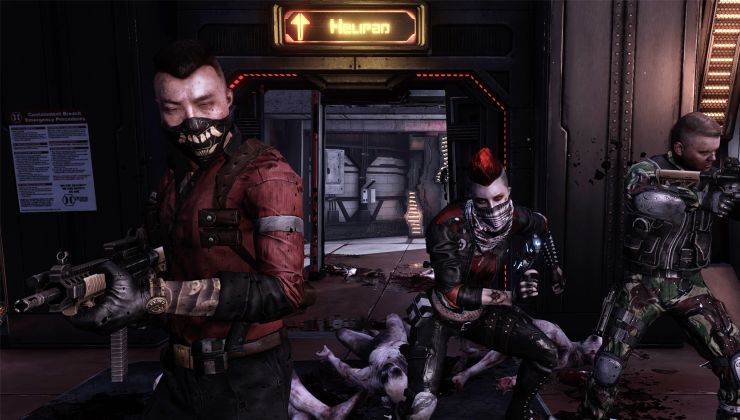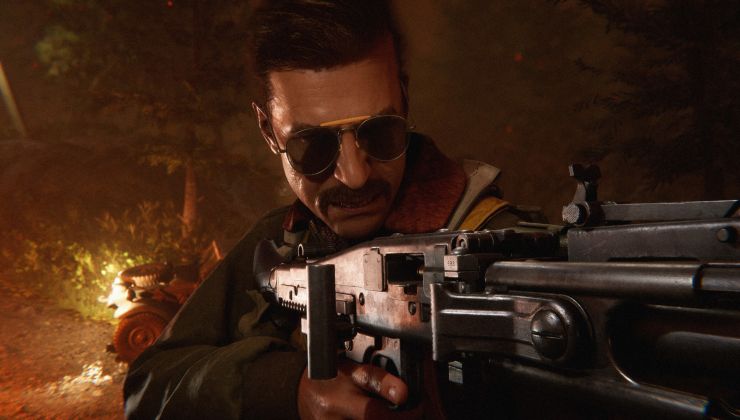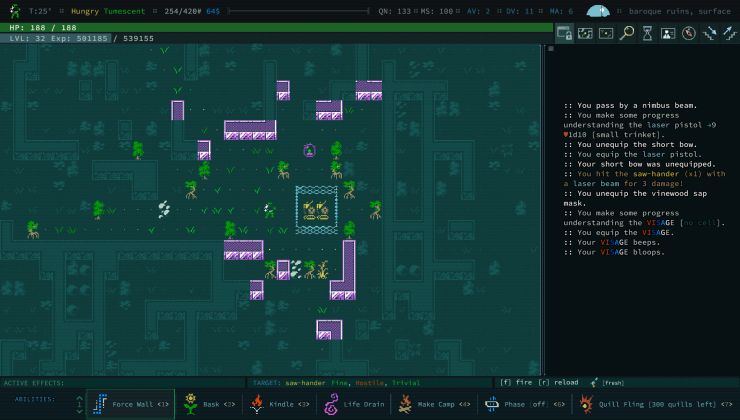Remember the classic Sensible World of Soccer or the original Sensible Soccer? Classics from the 90s and Ballsy! World Cup 2020 is a wonderful take on it. Note: key provided by the developer.
I have seriously fond memories of SWOS, playing endless hours on the Amiga a long time ago. Ballsy really does feel like it both mechanically and visually although naturally it's more modern and looks a lot cleaner. After originally releasing in October 2020, the developer decided to port it in December 2020 to Linux.
"Tired of these sluggish, scripted modern football games? Still like some physics momentum in your retro footy game? Search no longer! Ballsy! offers that fluent feel for flowing football fans. The European football, that is, so, not handegg. Though truth be told, the term 'soccer' was actually invented by the English, so it doesn't deserve all the hate it gets."

Direct Link
A genuine surprise that it feels so great, if you've been after a simple pick up and play retro Football game, this is easily worth picking up. Play against AI, friends / family in local multiplayer and it also supports Steam Remote Play Together.
I'm saying that we can observe a system that rewards them to use inefficient tools built on inefficient tools.
It is true what you say: "it's just not worth the time and effort."
Still, i find it so unappealing, and sad.
Quoting: kokoko3kQuoting: F.UltraI think Sensible soccer required just 7mhz and 512kb of ram when running from the floppy drive :)Quoting: kokoko3kWell judging from what i see, SWOS feels so much better...
I just played today via FS-UAE and my brand new quickshot 2 turbo hooked via an adaptor to the usb port ^_^
Also there is this: https://www.sensiblesoccer.de/swos-2020
but it seems Windows and Amiga only.
Yeah it's a bit strange that a game from 2021 with all the advanced in cpu+gpu power still is more sluggish than a game from 1992 running on a 14Mhz machine with 2MB RAM...
Playing with word meanings, 'strange' is not right unfortunately, quite the opposite, indeed.
It is fairly typical in the whole computer and operating systems development history started when pc-ibm took over the amiga and the "let's optimize software that can run on actual hardware" paradigm switched to "You've to buy new hardware to run my software"...
So that today, to read a bunch of kilobytes of text out of the web before growing old, you need a bunch of gigaherts and a bunch of gigabytes of ram ^.^.
Sadly, not strange at all :/
Yeah you are right, memory told me that SS required a A1200 but I see now that they released both a ECS and a AGA version that explains it, everybody at our local computer club played Sensi on the A1200:s that we had there.
Quoting: GuestQuoting: kokoko3kQuoting: GuestOlder games for older hardware that didn't vary, aimed at 640x480 at best, many with a 25fps target (hooked up to a tv rather than a dedicated monitor), 16bit graphics, limited or absolutely no networking, far more simplified audio, no multitasking worries, and with a much higher barrier to development entry compared to today (both economically and for required technical knowledge).Still, they were a lot of fun.
Never said they weren't, just pointing out the incredible differences in hardware targets back then. Actually older games were often more fun I find, because they had to use gameplay to be fun rather than distract with "ooooh, shiny".
Quoting: kokoko3kAlso no shaders, no windowing subsystems to worry about, and far fewer pixels at a much reduced rate to be concerned with. You really can't compare them quite so easily.Quoting: GuestJust bear that in mind when comparing against modern games.
Let's take Ballsy! vs Sensible soccer.
GPU:
* Ballsy: Any modern GPU
* SS: Amiga OCS blitter was capable of almost 1k pixel per second, no 3D, the copper and that was it.
* Ratio: Almost a number bigger as you want
Quoting: kokoko3kHD space:Textures alone will account for a lot of that space. Sure, some of it can probably be compressed, or procedural generated (the pitch itself is probably the most simple version of that) - but using a little more space can be more flexible, especially for an artist, and easier to test with and update. So textures alone (32bit vs 16bit, much larger resolution, applied in more areas) will almost certainly give more flexibility in what can be done.
* Ballsy: 200MB of Storage
* SS: 880KB of Storage
* Ratio: 225X
Quoting: kokoko3kRAM:And also deal with a lot more. Seriously a lot more. On top of a fully-fledged OS, and without the benefit of knowing exactly the memory requirements (differing resolutions, number of players, what can be allocated by the OS and where, the list goes on). Of course there is some layering that the game developer can't do much about (graphics stacks for example, Vulkan showed how much slimmer they can be), which leads me to....
* Ballsy: 512 MB of RAM
* SS: 512KB of RAM
* Ratio: 1000X
CPU:
* SS: 68000@7mhz: something around 2.5 MIPS
* Ballsy: 64bit processor... Intel Core2 Duo is over 20k MIPS
* Ratio: around 8000x
Quoting: kokoko3kAnd today if you read the system requirements for Ballsy, you can even easilly say "Wow, this game is very light!"
Yes it is, relatively. Could it be lighter? Sure, but that's why before I mentioned about barrier to game development entry. The demo scene people still produce incredible feats with 64kB. It also requires a lot more effort to get that done. This game is very light considering the technical knowledge required to get a game out the door.
It's simply an invalid comparison to try scale up some numbers when there are so many other factors to take into account.
Sensi on the Amiga was 50fps (remember that the discussion is that it was less sluggish, not more) also the pixel format on the Amiga was orders of magnitude more resource intensive to work with since you had bitplanes and not chunky pixels as you have on PC.
Also remember that you can play Sensi in a emulator on a modern pc with far better performance that was available back then on real hw, and then the emulator is afflicted by all of the things that you list that a modern system have to cope with except for the single issue of resolution.
Sensi was a 320x256 game with 32 colors, so 5 bitplanes. Not sure if the game used all 32 colors though but the display mode supported 32 colors. So each frame was 51200 bytes. A modern 1920x1080 game have what, 16 bits per pixel? So 4147200 bytes per frame which is only 81 times more bytes per frame (and in a much easier chunky format vs handling bitplanes).
The A500 could move memory at 7MiB per second (no caches) to chipmem (where all the graphics are), my "modern" Ryzen 1600x can move around 5800 times that and my RX480 can move around 37000 times that.
But I don't think that Ballsy is thousands of times slower than Sensi due to incompetence, I think that it's by design.
QuoteGPU:
* Ballsy: Any modern GPU
* SS: Amiga OCS blitter was capable of almost 1k pixel per second, no 3D, the copper and that was it.
* Ratio: Almost a number bigger as you want
A little correction: The OCS Amiga does blitting operations at 1 million pixels per second (CPU is still free to manipulate pixels, simultaneously with the blitter). 3D is handled by the CPU (or the blitter can connect points into lines and then shade poly faces itself leaving the option to generate and fill more polys using the CPU). Copper and Blitter have access to separate RAM (DMA channels) and are also cycle-interleaved so they won't interrupt the CPU unless forced to. Copper and Blitter use odd cycles and the sprite generators use even cycles. The OCS blitter manipulates graphics at twice the speed of the Motorola 68000. All of this is in the Amiga Hardware Reference Manual.






See more from me